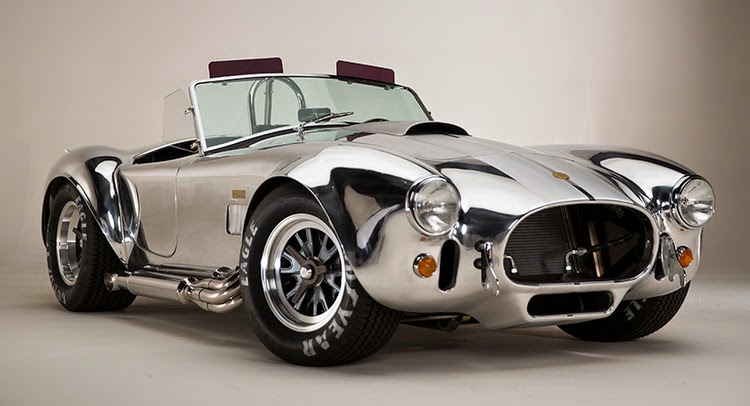Audi has officially blown the covers off the second-gen Q7 luxury SUV that sheds a few hundred pounds and features a more chiseled, but overall familiar design.
Built on a modified version of Audi’s MLB platform, the new Q7 has undergone a drastic diet losing 325kg or 716.5 pounds over the previous model, with the 3.0 TDI tipping the scales at 1,995kg or 4,398.2 lbs.
Some 71kg or 156.5 lbs were cut from the body, with the aluminum doors alone accounting for 24kg or 52.9 lbs. The front fenders, hood and tailgate are also made from aluminum, while Audi says that over 100kg or 220.5 lbs were taken out of the chassis.
Even though the new Q7 is slightly shorter (-37mm or 1.5 in.) and narrower (-15mm or 0.6 in.) than its predecessor at 5,050mm long, 1,970mm wide and 1,740mm tall, riding on a 2,990mm wheelbase, Audi claims that the cabin is longer and offers more head room for passengers of both rows.
In particular, there is an additional 21mm (0.8 in) between the first and second rows of seats, while head room has increased by 41mm (1.6 in) and 23mm (0.9 in) for first and second row passengers respectively.
Things are less exciting when it comes to the Q7's exterior styling as the luxury SUV was penned under Ingolstadt's existing design language. It's far less bulbous than the previous model with more defined lines and a three-dimension single frame grille, but frankly, it looks a lot like a re-sized Q3.
The interior is a different story with Audi giving their top SUV a nicely designed and modern dashboard that can be optionally equipped with Audi's new 12.3-inch TFT instrument binnacle, similar to the one featured in the latest TT. Audi has also made efforts to de-clutter the dash and improve ergonomics.
As with the outgoing model, the new Q7 has three rows of seats. The second and third second row can be folded down and tipped up. With all seven seats occupied, the SUV has a boot capacity of 295 liters (10.4 cu ft), while in five-seater configuration, that figure climbs to 890 liters (31.4 cu ft) and in two-seat, a massive 2,075 liters (73.3 cu ft).
Naturally, Audi offers all sorts of standard and optional amenities including, but not limited to, a kick motion tailgate opener, the latest generation of the Audi MMI infotainment system with a 7-inch or 8.3-inch retractable display and a full touch surface, Bang & Olufsen Advanced Sound System and even Audi-branded tablets for the rear passengers.
In Europe, the new Q7 will launch with two V6 engines, the 272PS (268hp) and 600Nm (442.5 lb-ft) 3.0-liter diesel that reaches 100km/h (62mph) in 6.3 seconds, and the 333PS (328hp) and 440Nm (324.5 lb-ft) 3.0-liter supercharged petrol that completes the same sprint in 6.1 seconds. Both engines are hooked up to an 8-speed automatic transmission.
Surprisingly, Audi will offer a 2.0-liter TFSI four-cylinder gasoline engine with 248hp (252PS) and 370Nm (272.9 lb-ft) of torque in select Asian markets and –wait for it- the USA.
There will also be a more frugal, but less powerful 3.0 TDI Ultra diesel engine with 215hp (218PS) and 500 Nm (369 lb-ft) of torque.
A plug-in hybrid version with quattro all-wheel drive will also join the range late 2015. Named the Q7 e-tron, it will pair a 3.0-liter turbo diesel V6 with an electric motor integrated into the 8-speed tiptronic transmission producing a combined 373PS (368hp) and 700Nm (516.3 lb-ft).
The lithium-ion batteries store 17.3 kWh of energy, enabling a range of up to 56 kilometers (34.8 mi) in pure electric mode.
According to Audi, the Q7 e‑tron accelerates from 0 to 100 km/h (62.1 mph) in 6.0 seconds, and from 0 to 60 km/h (37.3 mph) in 6.1 seconds on electric power alone. Top speed is 225 km/h (140mph).
When using both power sources, the Q7 e-tron returns a combined figure of 1.7l/100km (138.4 US mpg) – for a CO2 equivalent of less than 50 grams per kilometer (80.5 g/mi).
The Q7 will celebrate its world premiere at the Detroit Auto Show in January, where we will learn more about the North American model's specifications.





















.jpg)



































































